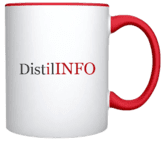
A recent Health Affairs report, authored by the Hilltop Institute researchers, sheds light on the limited scrutiny of healthcare payer compliance with price transparency regulations introduced in July 2022. Unlike hospitals, insurers have largely avoided comprehensive evaluation due to the complexity of the regulatory landscape. Key challenges include overlapping enforcement responsibilities, ambiguity in rule applicability, and difficulties in identifying all obligated organizations. The report recommends compliance assessments in the individual market, using Form 5500 Schedule A data, and updating transparency regulations. Effective enforcement is crucial to harnessing the data’s potential to control rising healthcare costs.
A recent report in Health Affairs, published on September 19th, highlights the current state of compliance among healthcare payers regarding price transparency regulations implemented in July 2022. The study, conducted by researchers from the Hilltop Institute, an unbiased research organization affiliated with the University of Maryland in Baltimore, reveals a lack of comprehensive assessment of compliance within the payer sector.
Unlike hospitals, which underwent scrutiny for compliance with a similar rule introduced in 2021, insurers have largely escaped comprehensive evaluation. The researchers argue that this disparity in monitoring stems not from a lack of interest but rather from the intricate and multifaceted nature of the regulatory landscape governing payers.
Here are six key insights from their findings:
1. Enforcement Complexity: The assessment of payer compliance encounters complexities due to the involvement of a mix of state and federal agencies responsible for enforcement, contingent upon the type of health plan in question.
2. Ambiguity in Applicability: Defining the exact entities subject to these regulations presents another challenge. While the rules technically target group health plans and health insurance issuers, these categories often intertwine, making it difficult to pinpoint which entities are responsible for adhering to price transparency rules.
3. Addressing Overlaps: The regulations do acknowledge these overlaps and strive to address potential redundancies.
4. Identification Barriers: Identifying all organizations obligated to disclose pricing data encounters hurdles. Publicly available data on self-funded and fully insured ERISA plans nationwide is limited, and the agreements and data relationships between group plans, issuers, or third-party administrators are also not readily accessible.
5. Market Segmentation: Despite these barriers, there is clarity regarding the payers participating in the individual, small, and large group markets, as well as ERISA group plans with 100 or more individuals.
6. Compliance Recommendations: The authors propose three suggestions for assessing compliance: initiate compliance assessments in the individual market, employ Form 5500 Schedule A data to identify payers contracted with large-group ERISA plans, and update transparency regulations to mandate group health plan sponsors to disclose agreements with payers or third-party administrators.
The authors draw attention in their concluding remarks to the disparity between the wealth of compliance studies conducted for hospital price transparency rules, which spurred hospital compliance and prompted state legislation. They emphasize that, given the relentless rise in healthcare costs, time is of the essence for the payer rule. To capitalize on the potential of this valuable new data source for reducing national healthcare spending, regulators and agencies must step up their compliance efforts.


